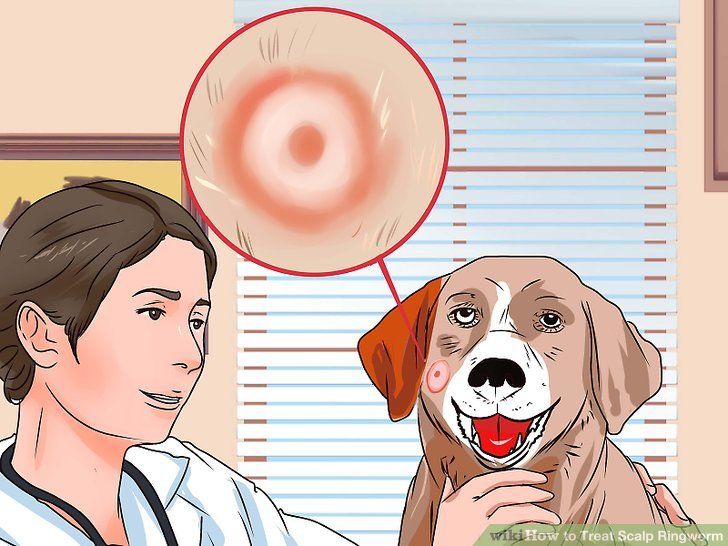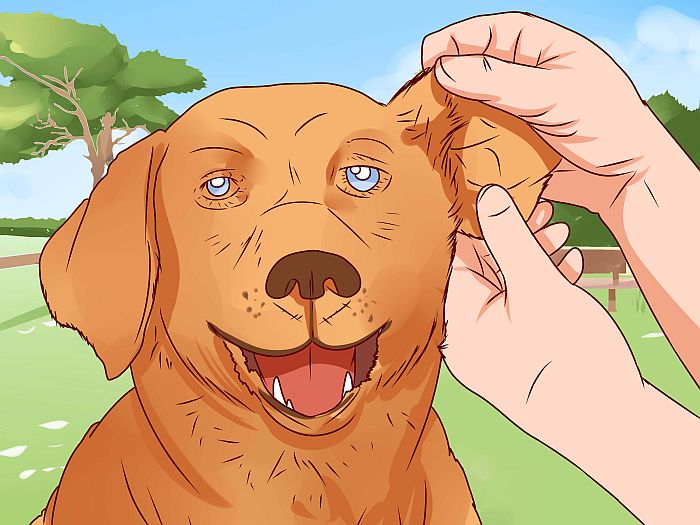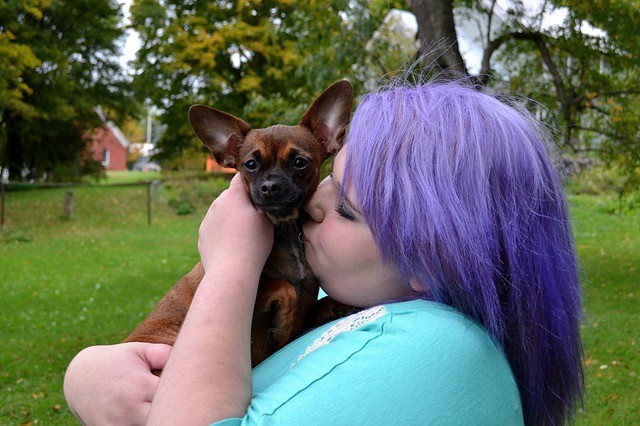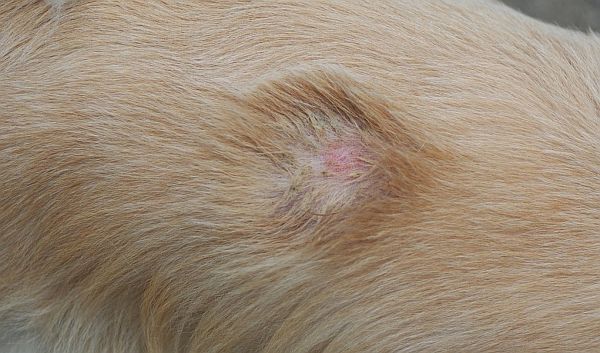When your dog gets sick a trip to the vet is not always cheap.
In the case of ringworm in dogs, you may want to explore these natural remedies as alternatives to conventional medicine.
Here are some simple home remedies that can do the trick. Your dog will thank you for it.

Home Remedies for Ringworm in Dogs
Although antifungal drugs, topical medicines, and medicated shampoos are the first choice for treating ringworm in dogs, there are also home remedies that can help you get rid of it.
- Apple Cider Vinegar – Its natural acidity is effective for killing ringworm. Make a water and apple cider vinegar solution. Rinse your dog’s entire coat with it and let it air dry. This home remedy is effective for treating mild cases of ringworm and must be used carefully in dogs with rashes and open lesions.
- Tea Tree Oil –Tea tree oil is a known disinfectant and has antibacterial and anti-fungal properties. Always use tea tree oil in diluted form. Mix 1% tea tree oil with water and dab it on the dog’s affected body areas twice daily for a week.
- Papaya – Rub a raw piece of papaya on the ringworm several times daily to soothe the itching and aid in healing. You can also make a papaya paste and apply it on affected areas before covering it with a gauze.
- Bleach – Apply a diluted amount of bleach on a cotton ball and apply it on the affected body parts. Observe whether your dog develops an allergic reaction to the bleach. Also, refrain from using bleach if your dog can reach the affected area and lick it.
- Garlic – Rub half clove of garlic on the ringworm twice daily for one week. Garlic is a superfood and is a natural broad-spectrum antibiotic that has antioxidant, antibacterial and antifungal properties among others. Crush a clove of garlic and let it sit for 10-15 minutes before rubbing it on the ringworm.
- Aloe Vera Juice – Aloe Vera juice has anti-fungal and antibacterial properties, so applying it on the affected area twice or thrice daily can get rid of ringworm. It’s not as painful as other remedies and it can be applied on broken skin or inflamed lesions.
- Calendula – It promotes wound healing and has anti-fungal and anti-inflammatory properties. You can use calendula ointment or cream, or better yet, calendula essential oil. Mix 1 teaspoon olive oil with 10 drops of calendula oil and apply it directly on the ringworm. Do this twice or thrice daily. It is safe to use on open and inflamed lesions just like aloe vera juice.
- Coconut Oil – This wonder oil also has antibacterial and antifungal properties that can fight off fungal infections like ringworm. Apply coconut oil on the ringworm and rub gently twice or thrice a day.
- Colloidal Silver – It is another natural broad-spectrum antibiotic with disinfectant, antiseptic, and anti-fungal properties. It is even effective in fighting pathogens that have developed a resistance to antibiotics like MRSA. Apply it directly on the ringworm and rub gently two or three times daily.
- Lavender Oil – This fragrant oil has a long list of health properties including anti-inflammatory, antibacterial, and anti-fungal. Mix 10 drops of lavender oil with a teaspoon of a carrier oil like olive oil and apply directly on the ringworm. Rub it gently. Do this two to three times every day until you have ringworm symptoms relief.
- Licorice Root – Mix 10 drops of licorice oil with a teaspoon of olive oil and apply the mix directly on the ringworm. It is also safe to use on broken and irritated skin.
- Pumpkin Seeds – In addition to the antioxidant and antimicrobial properties of pumpkin seeds, they are also a great anti-fungal agent. Grind the pumpkin seeds into a fine powder and add them to your dog’s food once daily. Take note to add only ¼ teaspoon of pumpkin seed powder for every 10 lbs. of the dog’s weight.
- Honey and Turmeric – They are known antibacterial and anti-inflammatory agents that not only kill the fungi, but promote fast healing. Make a paste of the two and apply directly on the ringworm.
- Mustard Powder – Grind up mustard seeds to make a fine powder. Make a paste by mixing it with honey or filtered water. Make sure you quarantine your dog before applying it since turmeric can stain carpets and other furniture.
- Myrrh – It not only has anti-fungal properties but can relieve itching and soothe the irritation too.
- Holy Basil – Its anti-fungal properties can help kill ringworm. Crush the holy basil leaves to get their juice and apply it on the affected area. Do this twice daily for ten days to get rid of the infection.
Let’s explore further this condition to get a better understanding of how to deal with it.
What is Ringworm?
What is ringworm in dogs?
How do they catch it?
Ringworm is a common parasitic fungal infection on the skin’s surface. Another misnomer, ringworm is caused by a fungus and not by worms. The medical term for ringworm is Dermatophytosis or tinea (Latin for a growing worm). (1)
It is an infection that plagues both humans and animals. Its name often indicates the affected body part. Tinea capitis (scalp ringworm), tinea corporis (body ringworm), tinea cruris (jock itch), and tinea pedis (athlete’s foot) are examples.
What Causes Ringworm In Dogs?

It is an uncommon fungal infection in dogs and more common in cats, but that does not mean your dog won’t get this illness. (3) Puppies less than a year old are at a higher risk of getting ringworm. Stressed, malnourished, and immunocompromised dogs are also at a higher risk than those that are healthy.
Dogs usually get ringworm in the head, ears, forelimbs, and paws. The same microscopic organism causes ringworm in humans and in dogs depending on your location. They are Microsporum canis, Microsporum gypsum, and Trichophyton mentagrophytes.
Three types of fungi are the causative organisms for ringworm.
These fungi are called dermatophytes, “skin fungi” or “plants that live on the skin”, which live off keratin or dead skin tissue and hair. It’s the tough and waterproof tissue found in different body parts like the hair, nails, and the skin. These dermatophytes are:
- Epidermophyton
- Microsporum
- Trichophyton
These fungi can live as spores in the soil for a long time. They are tough and can survive for many months, especially with heat and moisture. You or your pet can contract the fungi if you are in direct contact with the soil. Children and pets like dogs are commonly in contact with the fungi. This illness is contagious and can be passed on from one person to another through direct contact with the infected area or by sharing personal items or clothing. You are at higher risk of getting ringworm if you frequently use communal showers and swimming pool changing rooms.
How Ringworm is Spread?

- Human-to-human contact
- human-to-animal contact
- human-to-object contact
- human-to-soil contact
What does ringworm look like?

Since ringworm can affect different parts of the body, symptoms greatly vary but commonly include:
- Red, scaly, itchy or raised patches
- Patches that look like a ring or appears to be redder on the outside
In short, ringworm looks like a red, round, itchy, scaly, and crusted rash in patches on the skin. The skin looks red and irritated surrounding the ring but not inside it.
In severe cases, ringworm looks like:
- Multiple rings that grow in size and merge together
- Patches with blisters or starts to ooze/blister-like lesions around the rings
- Patches that are itchy and have raised and defined edges
As the infection progresses, the ring spreads outward. There are some variations in the symptoms depending on the affected body area. (2)
How does a dog catch ringworm?
Dogs in kennels or animal shelters are also at higher risk of being infected than those that are domestically-raised where infected animals, bedding, carpets, dishes, etc. collect scales or infected hair and spread the fungus. Even pets raised at home can get ringworm if they are exposed to infected soil outside the house.
Symptoms of Ringworm in Dogs

The incubation period of ringworms is 10-12 days, meaning an infected dog won’t develop any lesions before this time. Ringworm in dogs looks like:
- Round and hairless lesions
- Reddened skin (erythema)
- Darkened skin (hyperpigmentation)
- Itchiness (pruritus)
- Dandruff (scales)
- Poor hair coat
- Patchy or circular hair loss (alopecia)
- Granulomatous lesions or visible raised boils, rounded and knotty lesions
- Inflammation of the claw folds (paronychia)
However, dogs are considered to be inapparent carriers. They may harbor the disease-causing fungus but do not manifest any visible signs of ringworm.
Is ringworm in dogs contagious to humans?
Yes, ringworm is a zoonotic infection. It can be passed on from infected dogs to humans whether a dog has or does not have any signs of ringworm like an inapparent carrier. Ringworm on dogs is still contagious to humans once humans touch it or are in direct contact with it.
A veterinarian can confirm ringworm after performing a wood lamp test where 50% of the Microsporum canis will glow under the blacklight, through a fungal culture of skin clippings, microscopic testing of hair samples, and even a biopsy. If ringworm in dogs is left untreated, it may run for two to four months before the symptoms resolve on their own.
How to prevent Ringworm in Dogs?

Prevention is important, so you don’t have to think about treatment after it is contracted. Ringworm spores are fairly easy to kill. Just make a solution of 500 ml. bleach and 4 liters of water or a 1:10 ratio and apply it on infected areas to kill 80% of the spores.
If your pet dog has ringworm, do not touch it and consult a veterinarian to diagnose the condition and to set a treatment plan. Putting infected dogs in quarantine should also be considered to prevent infecting others, to prevent other animals or humans from being contaminated as well as other things in the room or household. Steam cleaning the carpet or other furniture will also get rid of most of the spores. Clipping away the dog’s fur is also a sensible intervention method especially when topical drugs are used.
Is ringworm in dogs curable?
There are conventional medical treatments for ringworm in dogs but there are also natural home remedies to cure it.
Fungal drugs or fungal topical medications are given or applied on affected areas such as ketoconazole or itraconazole. To prevent dogs from ingesting the medicine applied to their skin, using an Elizabethan collar or a wide collar around the neck helps.
Medicated shampoos, ointments with miconazole or dips like lime sulfur can help get rid of the fungus. You or a vet can give lime sulfur dips twice weekly. Take note that this dip can cause temporary yellowing of the dog’s hair and even stain clothing and jewelry so use gloves. Another reason why you should wear gloves when applying topical medications is that ringworm is contagious and you might get it after direct contact.
Anti-fungus antibiotics like griseofulvin may also be given to resistant cases to inhibit fungal reproduction. The downside is that the dog may experience many side effects with this treatment. Fluconazole may also be given but has many side effects too like griseofulvin.
Even after treatment, it is still crucial to have fungal cultures done to monitor how your dog responds to treatment. Some dogs may appear symptom-free but remain positive in fungal cultures.
Conclusion
Ringworm is a common fungal infection that affects humans and animals. Understanding what ringworm is, what the usual symptoms are, how it is transmitted, and how it is managed can prevent it from worsening and subjecting your dog to pain and suffering.
If your dog is infected, and you are wary of conventional treatment, these home remedies can soothe the pain and irritation and help him recover quickly
A Question For You
I hope this guide showed you how to deal with your dog ringworm infection.
And now I’d like to ask you a question:
Did your dog or some other dog you know experienced ringworms? What did you do about it?
Or maybe you have a question.
Either way, leave a comment or tell us about your experience below, I’d be happy to hear from you.
Other Sources
(1) (2) (3) (4) (5) (6) (7) (8) (9) (10) (11)

Kassidy Shepperd is the editor in chief for Canine-Prime.com. She is is a dog lover/trainer, a freelance writer and a volunteer at many pet rescue and shelter centers. Kassidy is based in Colorado and regularly writes for dog related magazines and blogs.


